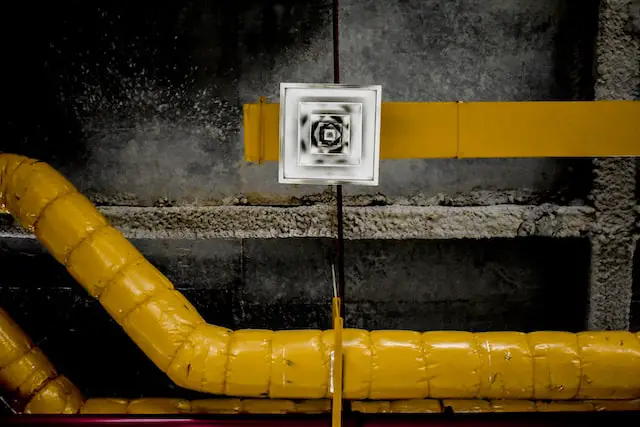Before planning for air duct cleaning for your office or business, you should know what you are about to get rid of in your HVAC system. Air duct contaminants compromise the air quality in your home. Prolonged exposure to them will have you developing respiratory issues and more.
Contaminants usually gather in some hard-to-reach parts in the ducts. So, it’s best to enlist commercial air duct cleaning services to clear all the areas in the duct system. Eliminating the contaminants through DIY might damage your system.
This article will help you learn about various air duct contaminants in your HVAC system and how to eliminate them. Read on to learn more.
Common Air Duct Contaminants in HVAC Systems
Clean air ducts maintain the air circulation in a house, allowing your HVAC system to transport cool or warm air to various rooms. However, contaminants like dust, dirt, mold, and bacteria can affect the HVAC’s efficiency. Here are the pollutants that can compromise your air quality.
- Dust and Dirt
Dust and dirt are the most common types of contaminants that settle in the HVAC system. As the HVAC experts found here will explain, dust mites thrive in dusty conditions, so it’s another pollutant you have to look forward to having in dusty air ducts. The dust accumulating in the HVAC system usually comes from the outdoors.
Since dust and dirt particles settling in the HVAC system are light, drafts can easily carry them into the ductwork. You can do all the recommended things to keep dust out, but it finally enters.
Realizing that you have dusty air ducts could happen too late when you get sick. You can look inside the vents carefully not to damage anything and to know when there is too much dust. Only an expert would know how to get to such parts to clear the contaminants.
- Mold and Bacteria
Mold and bacteria are also common ductwork contaminants in the HVAC system. They belong in the organic allergens categories. It’s hard to miss when you have a mold problem with the ductwork in your office. It causes an array of allergic reactions that could immobilize you.
Mold and bacteria in the HVAC system thrive since it’s somewhat humid and warm inside, all favorable conditions for decomposition. The drip pan, for instance, is a petri dish for bacteria. So, bacteria and spores flow through your air duct and grow while circulating in your space.
Different types of mold can grow in the ductwork in your office. An expert might come in handy when trying to identify them. The worst case scenario when you have a severe mold infestation in your ductwork and HVAC system is that you must replace the entire network.
- Insects- Dust Mites
Small insects can form nests in the HVAC system and finally find their way into the ductwork. Dust mites are the most likely to populate the ductwork. They expressly thrive in a dusty environment. In addition, the fecal matter from dust mites causes lung irritation as it contains potent toxins that occur inside the insects.
Although they breed fast, you will hardly notice dust mites in the HVAC system. Tiny spiders can also live in the ductwork. If you let insects live in the ductwork, the people using your office will always have allergic reactions.
Some larger insects nesting in the ductwork can chew away at it and cause tears which cause leaks. Regular ductwork maintenance might help you discover an insect invasion. However, ensure that only an expert checks the ductwork and HVAC for nesting insects.
- Dander
As much as having pets is the best thing in the world, it comes at a cost. You will have to accept that they shed a lot, and the fur will always end up on surfaces in our space. If your office is pet friendly, the dander ultimately ends up in your HVAC system.
Animals and humans shed skin and hair, which are light particles circulating in the air in your office. Dander is a potent allergen, just like dust which causes eye and throat irritation. Typically an HVAC system filter has a mechanism to trap dander and remove it from circulation.
Some dander particles, however, always end up in the ductwork. The danger in the ductwork then automatically ends up in your air space. Dusting and mopping your office every day can help reduce the amount of dander in your office space. Dander will always be there if people work in your office or you have office pets.
- Building Material Debris
Building material debris such as drywall dust, fiberglass, and asbestos contaminate the HVAC system. Usually, debris of this kind forms thin dust, which deposits inside the HVAC system. In addition, the dust is light, so it quickly moves into the ductwork.
It happens every time the HVAC runs. You end up breathing in the debris dust while it goes back into the ducts and on surfaces in the office. Some building material debris, such as asbestos, comes with a warning since it can cause long-term health issues.
Before setting up an office, ensure you know the materials used to build it. Perform research on them to know what to expect, especially with recent or old buildings. When cleaning building material debris from your office space, ensure you enlist the help of a professional. It might need special equipment that you may lack.
- Pollen
Pollen season is a nightmare for people with pollen allergies. It is a trigger for respiratory conditions such as asthma and eye irritation. In addition, pollen is light, so it’ll easily blow into your space and settle in various places, including the HVAC system.
Once in the HVAC system, it gets redistributed into HVAC parts, including the ductwork, with every cycle. Find out how to eliminate pollen collected in your HVAC system. Leaving it to be will affect employee productivity.
Final Thoughts
Some of the air duct contaminants in the HVAC system could cause irreversible harm and damage. Depending on where you live, some pollutants may be more prevalent than others. An air duct cleaning expert is in a position to eradicate the contaminants to make your working space safer. Ensure you can recognize the signs of poor air quality in your office.





